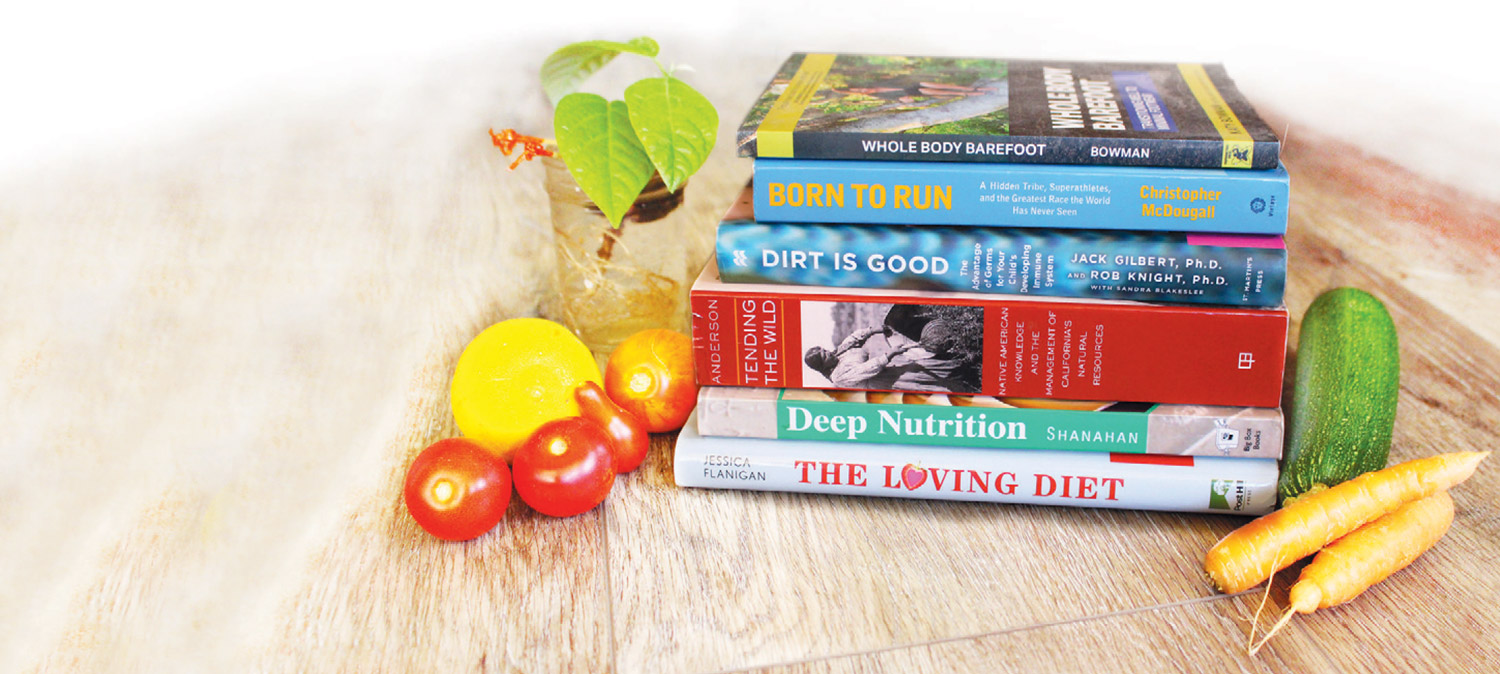Feast for the Eyes
What we are reading in the wellness sphere
The Loving Diet by Jessica Flanagan
Jessica Flanagan is a clinical nutritionist who is leading the way in emotional and spiritual support for people in recovery from restrictive healing diet movements. Her revolutionary approach to heart-body therapeutics was first shared through this book, which includes a definition of “loving” as a tool for healing your life and body. Her work has evolved so much since publication that she now recommends that folks focus on the lifestyle portions of this 2015 work and use the included dietary approach only if they are working with a doctor. It is well worth the read, especially if you ever feel like something is missing in your healing journey.
Deep Nutrition: Why Your Genes Need Traditional Food by Catherine Shanahan, MD, and Luke Shanahan
One of the first books diving into the way that genetics shape our health and how foods shape our genes, this well-researched tome digs into traditional diets around the world to find commonalities that built strong, (beautiful) and healthy ancestors. It then divides those into the Four Pillars of World Cuisine and shows you how to create the healthiest diet for your genes based on that foundation. (My copy is dog-eared and highlighted, well-used and treasured.)
Dirt Is Good: The Advantage of Germs for Your Child’s Developing Immune System by Jack Gilbert, PhD, and Rob Knight, PhD, with Sandra Blakeslee
While the field of microbiology and how it relates to our diets and lifestyles is ever burgeoning, this 2017 work is still relevant and valuable for parents, grandparents and caregivers alike. Answering questions like, “Is it OK for my child to eat dirt?” and “Do pesticides/herbicides, GMOs, etc., affect my child’s microbiome?” and so many more, scientists Gilbert and Knight lay out the research in clear, concise way that Google will never match. For an overview on the microbiome without a child focus, try The Good Gut, Justin & Erica Sonnenburg; Follow Your Gut, Rob Knight, PhD; 10% Human, Alanna Collen.
Whole Body Barefoot: Transitioning Well to Minimal Footwear by Katy Bowman
How does a book about feet have anything to do with nourishment? Well, according to Katy Bowman, only everything. Filled with exercises that (re)teach natural movement, loads of science-based but easy-to-read explanations and fascinating tidbits of history and culture, this is a must read for anyone struggling with back, joint or foot issues… or anyone who just wants to get more connected to their own body’s capabilities.
Tending the Wild: Native American Knowledge and the Management of California’s Natural Resources by M. Kat Anderson
Recommended by a local Chumash elder, this excellent reference text is one to keep coming back to again and again. The key component of this work seems to be that the health of the land, in its side-by-side evolution with indigenous people, has come to be as dependent on human stewardship as we are on it. In other words, careful and honorable cultivation of native plants, especially those regarded as edible and/or medicinal, is an important factor in maintaining the natural ecology of an area: humans as a part of nature, not outside of it.
Born to Run: A Hidden Tribe, Superathletes, and the Greatest Race the World Has Ever Seen by Christopher McDougall
This book embodies the phrase, “Real life is stranger than fiction.” While heralded as a running book because of McDougall’s quest for answers about his own injuries, there is still plenty of entertainment and adventure for the non-runner. Filled with nearly unbelievable stories about a remote tribe of Mexico’s indigenous Tarahumara people who blissfully run hundreds of miles without injury, modern ultra-marathoners and mind-blowing races that last more than 20 hours, this narrative could leave you questioning everything you thought you knew about the limitations of the modern human.





